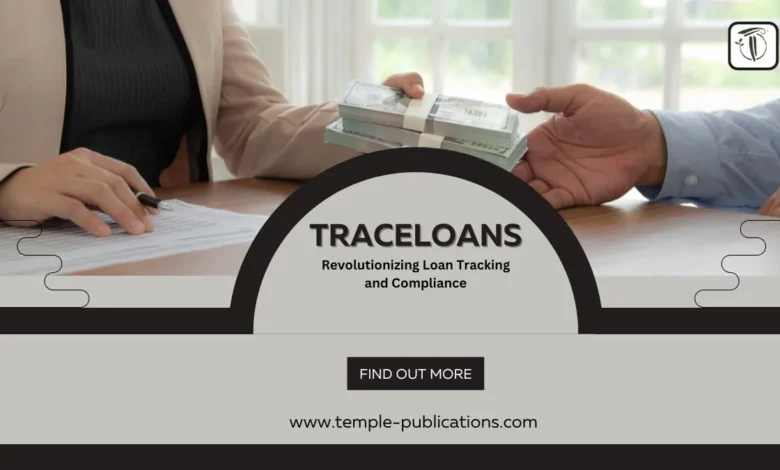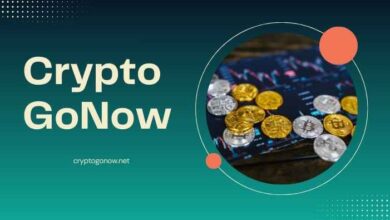Understanding Traceloans: A Comprehensive Guide to Your Financial Solutions

What are Traceloans?
Traceloans represent a modern financing solution designed to streamline the borrowing process for consumers and businesses alike. Essentially, these loans are a form of credit that leverages advanced technological systems for tracking and managing funds. Unlike traditional forms of loans, which often involve cumbersome paperwork and lengthy approval processes, traceloans utilize digital platforms to facilitate rapid decision-making and fund disbursement.
The primary function of traceloans is to offer borrowers a transparent lending experience. This is accomplished through real-time monitoring of loan utilization and repayment. Borrowers can access detailed insights into their borrowing status, repayment schedules, and interest rates, enabling them to make informed financial decisions. Furthermore, traceloans function efficiently by reducing the potential for fraud and default through sophisticated tracking mechanisms that secure each transaction.
In the financial market, traceloans have carved a niche for themselves due to several unique selling points. First and foremost, they often come with lower interest rates compared to conventional loans since they rely on digital platforms that minimize operational costs. Moreover, their user-centric approach allows borrowers to customize their repayment plans based on individual financial situations, a feature that traditional loans often lack.
Additionally, traceloans are becoming increasingly popular among small businesses, providing access to capital that may otherwise be unattainable. They offer flexible funding options that adapt to the variable cash flow that small enterprises often face. Overall, traceloans serve as a progressive alternative to traditional borrowing methods, catering to the evolving needs of today’s consumers and businesses in the fast-paced financial landscape.
How Traceloans Work
Traceloans operate through a streamlined process designed to enhance the experience of borrowers while ensuring transparency throughout their financial journey. The initial step involves an application where potential borrowers provide essential details about their financial background and loan requirements. This application can often be submitted online, allowing for quicker processing times compared to traditional lending practices.
Once the application is submitted, it undergoes a thorough review. The approval process typically involves an assessment of the borrower’s creditworthiness, which includes evaluating credit scores, income verification, and existing debts. Traceloans leverage advanced algorithms and tracing mechanisms to facilitate this evaluation, which helps in making informed lending decisions and enables the lender to predict repayment capabilities accurately.
Upon approval, borrowers receive a detailed loan offer outlining the terms and conditions, including the principal amount, interest rate, and repayment schedule. If the borrower accepts the offer, the funds are swiftly disbursed, often within 24 hours. This rapid fund disbursement is one of the key advantages of traceloans, making them an attractive option for those needing immediate financial assistance.
Repayment terms for traceloans are flexible, allowing borrowers to choose a plan that aligns with their financial capabilities. Options typically include monthly payments over a fixed term or other formats tailored to individual needs. The tracing mechanism employed by traceloans not only aids in the loan application but also helps borrowers track their repayment status, providing clarity and encouraging responsible financial behavior.
This systematic approach not only simplifies the borrowing process but also empowers individuals with better financial planning, cultivating a more informed and reliable borrowing experience. Traceloans truly represent a modern solution to personal and business financing needs.
Benefits of Using Traceloans
Traceloans present a variety of advantages that cater to the diverse needs of borrowers. One of the primary benefits is the flexibility in loan terms that traceloans offer. Unlike traditional loan products, which typically adhere to rigid repayment structures, traceloans can be tailored to suit individual financial situations. This flexibility allows borrowers to select manageable repayment plans, thereby making it easier to align the loan with their income and financial obligations.
Another significant advantage of traceloans is their accessibility. They are designed to accommodate a wide range of borrowers, including those with less-than-perfect credit histories. Traditional loan providers often impose stringent credit score requirements, which can exclude many potential borrowers from obtaining necessary funding. Traceloans, on the other hand, often prioritize personal circumstances over just credit scores, enabling a broader spectrum of individuals to access financial assistance. For example, a small business owner with an average credit score may successfully secure a traceloan to invest in equipment despite facing rejection from traditional banks.
When contrasting traceloans with traditional loans, the differences in processing speed further emerge as a notable advantage. With technology driving the lending process, approval times for traceloans are considerably faster, often taking only a few hours or days. This swift access to funds can be crucial for borrowers in urgent need of financial help, whether for personal emergencies or business-related expenditures. In sum, the combination of flexibility, accessibility, and expedited approvals positions traceloans as a compelling alternative to traditional financing options.
Potential Risks and Drawbacks of Traceloans
While traceloans offer convenient financial solutions for many individuals in need of quick access to funds, it is essential to consider the potential risks and drawbacks associated with these types of loans. One of the most significant concerns revolves around high-interest rates. Borrowers may find themselves facing steep financial commitments that can become increasingly difficult to manage over time. These elevated rates often reflect the risk involved in lending to borrowers who may not meet the criteria for traditional loans, effectively exacerbating the financial strain on individuals already grappling with economic challenges.
Moreover, the ease of obtaining traceloans can lead to overborrowing, which is a prevalent issue among borrowers. The rapid availability of funds might entice individuals to take on more debt than they can reasonably repay. This tendency can create a cycle of borrowing where individuals continuously rely on traceloans for financial relief, ultimately leading to greater financial instability. Borrowers should exercise caution and ensure they thoroughly assess their repayment capabilities before committing to a traceloan.
Another critical aspect to consider is the potential dependency on the tracing system itself. As borrowers become accustomed to utilizing traceloans, they may inadvertently develop a reliance on these financial solutions. This dependency can limit one’s financial literacy and ability to maintain effective budgeting practices. However, understanding the tracing system may mitigate some risks, allowing borrowers to make informed decisions. Overall, being aware of these potential pitfalls is crucial for anyone considering traceloans, equipping them to navigate the financial landscape more prudently and responsibly.
Who Can Benefit from Traceloans?
Traceloans serve as a valuable financial solution for a diverse range of borrowers, catering to specific demographics and circumstances. One prominent group that may benefit from traceloans includes individuals with poor credit scores. Traditional lenders often dismiss applicants with unfavorable credit histories, leaving them with limited borrowing options. Traceloans, however, frequently focus on the applicant’s current financial situation rather than their past credit performance. This unique approach enables individuals facing financial hardship to access essential funds for emergencies or necessary expenditures.
Small businesses in need of immediate capital also often find traceloans to be particularly beneficial. Many small enterprises face cash flow challenges, whether due to seasonal fluctuations or unexpected expenses. Traditional banks may impose lengthy approval processes and stringent requirements, making it difficult for these businesses to access funds when they need them the most. Traceloans typically offer a more streamlined application process, allowing business owners to secure the financing they require swiftly, enabling them to invest in opportunities or cover operational costs without significant delay.
Additionally, individuals seeking to consolidate debt represent another customer segment that can derive significant value from traceloans. Debt consolidation can simplify financial obligations and potentially lower monthly payments, but obtaining a loan for this purpose can be challenging for those with existing financial burdens. Traceloans provide a viable alternative, allowing borrowers to merge their debts into a single loan with manageable terms. By leveraging traceloans, individuals may enhance their financial stability and improve their overall credit standing over time.
In conclusion, the wide-reaching advantages of traceloans make them an appealing financing option for various borrowers, including those with bad credit, small business owners requiring quick funding, and individuals aiming to consolidate debt. Understanding these demographics can assist potential borrowers in making informed financial decisions that align with their specific needs.
How to Apply for Traceloans
Applying for a traceloan is a straightforward process that can be completed online, making it accessible to a wide range of potential borrowers. To begin the application, it is essential to gather the necessary documentation, as this will facilitate a smoother approval process. Typically, lenders require identification proofs such as a government-issued ID, proof of income (like pay stubs or tax returns), and bank statements demonstrating your financial stability. Some lenders may also request additional documents, so it is advisable to review their specific requirements before proceeding.
Once you have the required documentation, the next step is to visit the lender’s website to access their online application portal. Most lenders will have a dedicated section for traceloans, where you can either create an account or log in if you are an existing customer. The application form usually asks for personal information, including your name, address, social security number, and details about your employment. Ensure that all information is accurate to avoid delays in processing.
After completing the application form, you will typically need to upload your documentation directly through the portal. It is crucial to double-check that all documents are clear and legible to enhance your chances of approval. After submission, lenders will review your application alongside your credit history. Knowing your credit score beforehand can help manage expectations, as higher scores generally lead to better loan terms.
To increase the likelihood of approval, consider addressing any outstanding debts before applying, as this can improve your debt-to-income ratio. Additionally, ensuring that you have a stable income and a good repayment history can strengthen your application. Once your application is submitted, the lender will typically inform you of their decision within a few days, allowing you to proceed with your financial plans accordingly.
Regulatory Landscape Surrounding Traceloans
The regulatory environment surrounding traceloans is critical for ensuring consumer protection and maintaining the integrity of the financial system. Various laws and regulations govern how these loans are issued, their terms, and the responsibilities of lenders. These regulations are designed to safeguard the interests of borrowers while promoting fair lending practices.
One of the key pieces of legislation relevant to traceloans is the Truth in Lending Act (TILA), which mandates that lenders provide clear and accurate information about loan terms and costs. This includes disclosing interest rates, fees, and the total cost of borrowing. By enforcing transparency, TILA helps consumers make informed decisions regarding traceloans, enabling them to compare different loan offers effectively.
Additionally, the Consumer Financial Protection Bureau (CFPB) plays a significant role in overseeing the lending practices associated with traceloans. The CFPB enforces regulations that protect consumers from predatory lending practices and requires lenders to adhere to fair lending standards. This agency also provides resources and education for consumers, ensuring they are aware of their rights when taking out a loan.
Lenders are also required to comply with state-specific regulations, which can vary significantly. Some states impose caps on interest rates, while others have specific requirements for loan documentation and assessments of borrower creditworthiness. These measures are intended to promote responsible lending and protect consumers from excessive debt burdens.
Consumers considering traceloans must be aware of their rights under these various regulations, including the right to a clear explanation of terms and the right to dispute inaccurate information. By understanding the robust legal framework that governs traceloans, borrowers can better navigate their financial options and make informed decisions that align with their financial goals.
Alternatives to Traceloans
When considering financial options, it is essential to explore various alternatives to traceloans to find the solution that best fits individual needs. Traditional bank loans are one of the most commonly sought alternatives. Banks typically offer a range of loan products, including personal loans and home equity loans, with competitive interest rates. However, the application process might be lengthy and require extensive documentation, making it less accessible for some borrowers.
Another viable alternative is obtaining a loan through credit unions. These member-owned organizations generally provide lower interest rates and more favorable repayment terms compared to traditional banks. Credit unions may also have less stringent credit requirements, making them a suitable option for individuals with less-than-perfect credit histories. Furthermore, they often focus on the community and member needs, providing personalized service and support throughout the borrowing process.
Peer-to-peer lending platforms have emerged as another option for individuals seeking funding. These platforms facilitate direct loans between individuals, bypassing traditional financial institutions. Borrowers can access funding from a network of individual investors, often at lower interest rates than those provided by banks. The application process is usually simplified and can be completed online, making it an appealing choice for borrowers looking for a quick and effortless solution. However, potential borrowers should be aware that although peer-to-peer lending may offer competitive rates, there is a risk associated with relying on individual lenders.
In summary, by comparing traceloans with traditional bank loans, credit unions, and peer-to-peer lending platforms, individuals can evaluate various financial products. This comprehensive analysis allows borrowers to make informed decisions based on their unique financial situations and objectives, ensuring they select the most appropriate borrowing option available.
Future Trends in the Traceloans Market
The traceloans market is poised for significant evolution in the coming years, driven by technological advancements, changing consumer behaviors, and broader economic shifts. As financial technology continues to develop, we can expect to see an increase in the digitization of traceloan services. This transition not only streamlines the loan application process, making it more efficient, but also enhances user experience through personalization and quick response times. Fintech companies are likely to leverage artificial intelligence and machine learning to assess credit risk more accurately and offer tailored loan products. Such innovations are set to redefine traditional lending practices, promoting a more inclusivefinancial environment.
Moreover, shifting consumer expectations, particularly among younger audiences, are influencing the traceloans landscape. Today’s borrowers prioritize transparency, speed, and ease of access, leading to an increased demand for user-friendly platforms that provide instant loan decisions. This trend is expected to encourage more traditional financial institutions as well as emerging startups to adopt similar features in their traceloan offerings, fostering an environment of competition that can benefit consumers.
Additionally, economic factors, including interest rate fluctuations and regulatory changes, will play a crucial role in shaping the traceloan market. Economic downturns may urge consumers to seek more accessible financing options, driving an increased demand for traceloans with flexible repayment terms and lower interest rates. Conversely, a robust economy may improve borrowers’ credit profiles, creating opportunities for lenders to introduce more diverse and innovative loan products.
In conclusion, the future of the traceloans market appears dynamic, characterized by technological innovations, evolving consumer preferences, and responsive economic conditions. Stakeholders in the financial sector must stay alert to these trends and adapt their offerings to meet the changing needs of borrowers while maintaining sustainable practices in lending.
You May Also Read This Usaworldtoday.



